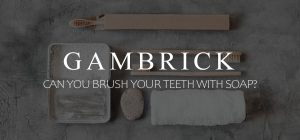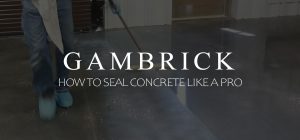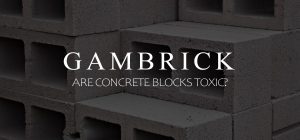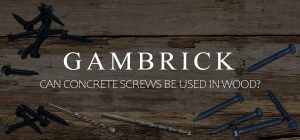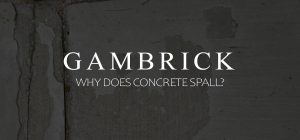
What Is Concrete Flatwork?
When concrete is poured on a horizontal plane to create a flat smooth surface such as a patio, sidewalk, floor or driveway, it’s called flatwork. It may seem simple, but it can be difficult to prepare the base and level the slab.
Excavation, pouring a strong base, compaction, constructing forms and forming rebar or wire mesh are all important parts of concrete flatwork. And so is making the concrete. If you don’t buy it from a concrete truck or in pre-mixed bags like Quikrete, you’ll have to make it yourself.
As a general rule of thumb, if jobs are small I use bagged concrete, for medium sized projects I mix my own, and for large scale jobs I get it trucked in.
Pouring concrete and eventually troweling it smooth are the last steps of a flatwork job. First, the ground must be excavated. Then a base material is poured and compacted. Next, forms are built and set in place. Finally, rebar or wire mesh is cut and tied together to form a skeleton for the concrete. Typically the preparation takes longer than the actual concrete work.
The last step is pouring the concrete into forms and working it until the surface is flat and smooth. Floats, trowels, sponges, brooms and edgers are all common tools used to shape and finish concrete. Flat work can be done inside and outside of the home. In the end, you’ll hopefully have a beautiful sidewalk, driveway, patio, road, or floor to walk on. Which are all great examples of concrete flatwork.
Concrete Flatwork Design
Concrete flatwork comes in a wide range of styles and designs. One of the best things about working with concrete is it’s versatility.
Forms. The most common thing used to design and shape flatwork are forms. Typically they’re made out of wood. For example, most sidewalks and patios are built using simple 2×4 wood forms. They create the mold you pour wet concrete into. When concrete hardens into the shape of the mold the forms can be removed. Flexible plywood can be curved to create curved concrete patios and sidewalks.
Color. Color can be added to the concrete in a few different ways.
- Pigment can be added into the wet mix which changes the color of all the concrete equally.
- Color can be thrown on top of the concrete as it dries. This is just a surface coat.
- Dyes or paints can be applied to the concrete after it’s dried and fully cured.
- Colors can be added into sealants or epoxy coats.
Stamps. Stamped concrete patios are a very popular type of concrete flatwork design. When the concrete is poured and hardening, stamps are pressed into the slab to create an impression. Colors can be used along with the stamps to create all sorts of designs
Combination. Concrete flatwork jobs can include multiple methods to create the finished design. This can even include other materials for decorative features like the edge trim. It’s very common to build a concrete patio with stone or brick edging.
Common Examples Of Concrete Flatwork
There are lots of common examples of concrete flatwork that you probably see and use every day. Here is just a small sample.
- Driveways. Concrete is a very popular driveway material. Generally it’s poured 6″ thick to support the weight of cars and trucks.
- Sidewalks. Simple sidewalk slabs are almost always made from concrete. They’re meant for pedestrian use which is light weight so 4″ thick is the standard.
- Patios. The most common patio material is concrete. 4″ – 6″ thick is the standard.
- Pool Decks. Concrete is a great material to use around a pool because it can have a textured finish which doesn’t get slippery when wet.
- Garages. The floor in almost every garage I’ve ever been in was made from concrete. We pour ours at 6 inches to support the weight of vehicles.
- Basement & Crawl Space. A basement or crawl space floor is almost always made from concrete too. These are typically 4 inch for a basement and 2 inch for a crawl space. The flatwork used in a crawl space is called a dust cap. It can be thin because it’s meant as a seal and not to support a lot of weight.
- Shed Floor. A great floor and foundation for a shed is a concrete slab. Vary the thickness depending on what you plan on storing in the shed. Simple shed are usually 4 inch. But if your using large and heavy machinery you may want to go thicker.
- Interior. Many interior floors are made from concrete. If the house is built on a slab the concrete can double as a foundation and finished flooring. This is very common in Modern style homes.
- Commercial. Most commercial store like a Home Depot or Walmart use polished concrete floors.
How To Do Concrete Flatwork
Concrete flatwork isn’t that hard to do. It’s one of the many reasons concrete is such a popular material all over the world. Here’s a breakdown of a typical job step by step.
- First, the site needs to be prepared for concrete. Mark outs and excavation are done. We excavate done deep enough for not only the concrete but also the base. Typically a 4″ patio will have another 6″ of compacted gravel below.
- Next we pour and compact the base material. Generally this is standard gravel.
- Once the base is done we build out forms. Typically the base is a bit wider than the forms. For example a 10′ x 10′ patio would be excavated about 10′ 6″ x 10′ 6″. Forms are almost always regular wood and plywood. Make sure they’re very sturdy and well built because concrete is heavy and puts a lot of pressure on the forms.
- After the forms are built we install the reinforcement. This could be wire mesh or rebar. If we’re working inside or in a basement this could also be a vapor barrier or sub slab insulation. Remember the inside of a home can have concrete flatwork too.
- Finally the concrete is poured and finished. Prior to pouring, additives like color or fiber should be added to the wet mix.
- As the concrete hardens we stamp it or add surface colors or textures. Anything that needs to be locked into the concrete is applied now.
- After the concrete is hardened for a few days and safe to walk on we remove the forms.
- Once the forms are removed the edge material can be installed.
- When the concrete is fully cured we come back and install the sealer. Typically this is after 28 days.
Concrete Flatwork Tools Needed
The tools you’ll need to do concrete flat work are all pretty basic. Even expert masons use primarily old fashioned hand tools you can buy at any Home Depot. Here’s a list broken down into stages.
Preparation Tools
- Shovel. You’ll need a flat and spade head shovel to mix and shovel the concrete, excavate and spread gravel.
- Leveling Tools. String, line levels, and standard levels of different lengths are all good to have Some masons use a laser or transom but they’re not necessary. It’s important to create a level base for the concrete.
- Spade. These are good for spreading gravel and dirt or mixing concrete.
- Mixing Tray. If you prefer mixing bagged concrete on the ground instead of in a wheel barrow or powered cement mixer then a good tray is essential. Buy one big enough to mix 2 Quikrete bags at a time.
- Carpentry Tools. You’ll need basic tools like a saw, hammer and screws to build all the forms.
- Fasteners. Buy strong nails and screws to make the forms. Concrete is heavy and presses hard against the forms so make sure they’re very strong before you pour.
- Powered Mixer. A powered mixer is a necessity if you plan on making your own concrete.
- Wheelbarrow. Great for moving dirt and gravel around as well as for mixing concrete. Buy one large enough to mix at least 2 Quikrete bags at a time if your working with premixed concrete bags.
Concrete Tools
- Rake. A concrete rake is a rectangular head on the end of a long pole. It’s made for spreading the concrete.
- Floats & Trowels. Concrete floats come in a variety of shapes and sizes. Typically we use large floats attached to the end of a pole to smooth large areas and then trowel the concrete smooth by hand at the very end.
- Pads. Concrete pads are needed to support a masons work as he trowels the surface.
- Hose. Masons always carry a hose with them in the truck. Water is a very important part of doing flatwork. You’ll not only need it to mix the concrete but also to clean off the tools and anything that gets splashed by wet concrete.
- Boots. Concrete boots are an important thing to keep in the truck. You’ll need them for walking in the concrete as you pour and spread it.
- Broom. Because if you want a brook finish on your new sidewalk you’ll need a broom.
- Edgers. That nice flat edge around a concrete slab is done with an edge tool.
- Joint Tool. Another hand tool you’ll need is the joint tool. It creates a joint between two slabs of concrete.
What Does Concrete Flatwork Cost?
There are a few factors that go into determining what concrete flatwork will cost.
Size. A bigger job is almost always more expensive than a small one. But not always in terms of the square foot price. It’s usually more cost effective to do larger flatwork jobs because the cost per square foot comes down a bit. Things like setting up forms, excavation, compaction, setup and cleanup all have to be done no matter what size the job is.
Concrete. Not all concrete is created equally. Like any building material concrete comes in different qualities and strengths. You can also buy it with special qualities mixed in like extra crack resistance, flexibility, faster set times or more strength.
Additives. Whatever you add into the concrete effects the price too. Things like colors, fiber or micro rebar and chemical hardeners can all be used.
Reinforcement. Most 4″ slabs have wire mesh inside the slab. Thicker slab often have steel rebar. This of course will effect the price.
Site Work. Excavation will typically be required for concrete flatwork. This comes with a cost as well as removal of excess dirt. Access is also an issue. If it’s hard to get machines to the work site you’ll have to pay extra.
Base. Most flatwork requires a compacted gravel base of some kind. The soil conditions, type of base material needed and it’s depth will alter the price.
Finishing. A simple gray concrete slab will cost less than if it’s stamped or has color. The more elaborate the finish the more the flatwork will cost.
Edge. The edge material makes a big difference too. Brick or pavers have a very different price than bluestone.
Average Costs
These prices are a National Average. prices may vary based on where you live.
In general, concrete flatwork averages around $14 per square foot for a 100 – 500 sq. ft. slab. That’s for basic gray concrete with a smooth or broom finish. This is all in including the forms, base material, compaction, cleanup, finish work, etc.
It costs $16 – $20 per sq.ft. for that same slab if it’s stamped.
Add an additional $1 – $4 p.s.f. for surface colors, textures or sealants. Add another $1 – $2 p.s.f. for coloring inside the mix.
Excavation for a slab this size is typically around another $1,000 – $1,500. This is in addition to the cost of the flatwork.
Add another $5 – $25+ per linear foot for the border. This price varies a lot depending on what type of material you choose and how you want it installed.
Expect to pay $2 – $7+ more per sq.ft. for elaborate curved designs and multi level flatwork. The more time it takes the crew to set up and build forms the more the job will cost.
Also expect to pay an additional charge of $1 – $5 per sq.ft. on average if your slab is hard to get too or has other special requirements. Masons generally need to excavate and deliver materials by machine. If it all has to be done by hand it will cost more for the labor.
Concrete vs Pavers
Concrete and pavers are two of the most common materials used for flatwork like patios, walkways and driveways. So, which one is better?
- Cost. Material and labor costs for pavers are typically higher than basic concrete. However, when concrete work gets more elaborate the price can be about the same. Another factor to consider is the cost of the pavers. You can buy cheap or very expensive pavers. On average, basic concrete is less expensive than even cheap pavers. It’s only when you add in stamps, colors and other additives that concrete can get more expensive. The design of the pavers is another big factor. Simple brick pavers are much cheaper than large elaborate multi paver designs.
- Grout Maintenance. Some paver jobs require yearly upkeep of the grout sand. And then there’s the weeds that can pop up out of the joints. These aren’t issues you have to worry about with concrete. Polymeric grout can be used but it doesn’t last as long as concrete and it’s expensive per bag and for installation.
- Repairs. Concrete flatwork needs relief cuts to prevent cracks due to expansion. But if cracks do occur they’re very hard to fix. Damaged concrete sections need to be cut out and redone. There’s no cheap or easy way to repair damaged concrete. But pavers are easy. Just pop out a damaged or stained paver and insert a new one. As long as you can get a matching paver repairs are very easy.
- Looks. Personally I prefer bare gray concrete to any other type of flatwork. I keep my large flat surfaces simple but like to add in a border trim like red brick or bluestone. But some homeowners prefer pavers or stamps with colored concrete. Use what works best for the house.
Concrete vs Asphalt
Asphalt is another popular construction material that’s used for flatwork instead of concrete. Most commonly for applications like driveways and roads. It’s a much cheaper alternative that can be installed in a day and doesn’t need forms.
Both materials have their strengths and weaknesses. It’s up to you to decide which is best for your project. The main considerations are appearance, cost, and maintenance.
- Appearance. Concrete is a much better option in terms of looks. You can use concrete flatwork on pretty much any home and at any price point. We see concrete patios, sidewalks, walkways and interior floors built for some of the most expensive homes in the world. Asphalt, a.k.a. blacktop is typically only used for the driveway and it’s not considered a high end option. Homeowners mainly use it because it’s fast, easy and cheap. Although it is a great driveway material.
- Cost. Asphalt work is generally cheaper than concrete, averaging just $2 – $5 per square foot. However keep in mind this is just the upfront cost at installation. Long term, concrete is the better value. Especially when you look at its return on investment.
- Maintenance. Asphalt requires constant maintenance. By prepare to seal and repair it regularly. Concrete benefits from using a sealer too but it’s not a requirement.
Common Flatwork Problems
Concrete is an all around fantastic building material. But for all it’s benefits there are a few drawbacks to flatwork.
- Discoloration & Staining. By nature concrete is a porous material. It’s made from aggregate stone, cement and sand mixed with water. The water chemically reacts with cement to harden the mix as it dries. This is called curing. As this happens, pores form within the concrete as the water evaporates. These pores can later soak up water like a sponge which can create a stain.
- Cracks. Concrete flatwork is very stiff and rigid which means it can crack. Expansion and contraction, vibration, excess loads and impacts are a just a few common causes. When flatwork cracks it’s very hard to repair since slabs are poured in large sections. Most often the entire section will need to be replaced to hide the repairs.
- Spalling. This appears as flakes or chips coming off the concrete surface. The most common cause is the freeze/thaw cycle. When water is absorbed into the concrete and then freezes it can damage the concrete.
- Crazing. A network of fine cracks on the surface of concrete is called crazing. They look sort of like a spider web. It’s most commonly caused by shrinkage of the surface layer. They don’t typically affect the structural integrity of concrete, but any cracks in the surface will hold more water which means the potential for more cracks.
Maintenance Tips
Concrete flatwork is built as a solid slab. Typically it includes some sort of reinforcing material inside like wire mesh or rebar. Slabs are separated by expansion joints to allow for some movement. If you’ve ever walked down a sidewalk and seen those black joints in between concrete section, they’re the expansion joints. Without them, if concrete moves and butts up against another slab, they could crack.
This design makes it very hard to repair flatwork if it gets damaged. In some cases, the repair work can cost more than the initial install because repairs involve demolition of the old slab. If a section is cracked, typically the entire slab has to be removed and replaced in order to hide the repair.
However, with proper care and maintenance damage can be avoided.
- Drainage. Concrete flatwork comes in slabs which is essentially a floor. Proper drainage is very important to get water off the slab. Slabs should be slightly pitched with water running into a drain and away from the concrete.
- Seal Cracks. If you find cracks in your concrete make sure to seal them right away. They allow water to seep into the slab and damage it from the inside.
- Surface Sealing. Concrete is very porous but a sealant can fix that. Because they sit on top the concrete’s surface and penetrate into the slab. Water can’t penetrate into the slab because the sealant prevents it.
- Installation. One of the leading causes of flatwork damage we see is improper construction. Improper reinforcement of the slab, a bad concrete mix or the wrong expansion joints.
Advantages of Concrete Flatwork
Flatwork is the most common type of concrete job used on residential and commercial properties. It’s a great material that’s very easy to work with and versatile. Because almost anything can be built out of concrete if it’s properly reinforced. And it looks great too. You’ll find flatwork in some of the worlds most expensive homes.
Durability
When done by a professional, flatwork can last over 30 years years without needing repairs. It’s naturally very resistant to the elements and can withstand heavy loads. If you properly maintain your concrete and use a good sealer, the concrete will last even longer.
The environment plays a role here too. In some areas that see lots of freeze/thaw cycles, concrete can get damaged easier by freezing water or expansion and contraction pressures. But a pro will compensate for this by reinforcing the concrete and including expansion joints.
Concrete has a very high compression strength which makes it ideal for flatwork. But it lack tensile strength which makes it bad as a support beam. Unless you add rebar. By including steel rebar inside the concrete you can span long distances safely. This makes some very strong and durable exterior beams.
Increased Home Value
High quality flatwork can increase your home’s value and enhance it’s curb appeal. And it can increase your ROI if you’re looking to flip or build a new home. Concrete is fairly cheap and easy to work with so you can make money with it. A beautiful new concrete driveway is a draw to most buyers and cheaper than pavers.
A backyard patio can also be a great selling point. And they don’t cost much. Compare a new concrete patio to the cost of a deck or paver patio and you’ll be surprised at the difference. Concrete is just as nice but much cheaper.
Easy to Maintain
You don’t need to worry about weeds popping up from the joints or replacing the grout sand. Concrete is one of the few materials that is truly maintenance free.
Although it’s recommend you use a sealer to prevent water damage and stains, it’s not required.
Another benefit to using concrete is how easy it is to clean. Generally all that’s needed is simple soap and water and a scrub brush.
Summary: What Is Concrete Flatwork?
Concrete is one of the most popular construction materials in the world. It’s been used for centuries to build everything from residential homes and buildings to large scale structures like bridges and dams. Even decorative items like cast fireplace surrounds, planters and countertops are made out of concrete. It’s extremely strong, easy to work with, versatile and fairly cheap. When concrete is poured on a horizontal plane to create a flat smooth surface such as a patio, sidewalk, floor or driveway, it’s called flatwork. It may seem simple, but there’s a lot more to building flat structures than just pouring the concrete.
Excavation, pouring a strong base, compaction, constructing forms and forming rebar or wire mesh are all important parts of concrete flatwork. And so is making the concrete. If you don’t buy it from a concrete truck or in pre-mixed bags like Quikrete, you’ll have to make it yourself. Luckily it’s not that hard to do.
Pouring concrete and eventually troweling it are the last steps of a flatwork job. First, the ground must be excavated. Then a base material is poured and compacted. Next, forms are built and set in place. Finally, rebar or wire mesh is cut and tied together to form a skeleton for the concrete. Typically the preparation takes longer than the actual concrete work.
The last step is pouring the concrete into forms and working it until the surface is flat and smooth. Floats, trowels, sponges, brooms and edgers are all common tools used to shape and finish concrete. Flat work can be done inside and outside of the home. In the end, you’ll hopefully have a beautiful sidewalk, driveway, patio, road, or floor to walk on. Which are all great examples of concrete flatwork.

John Mazzuca | About | More Posts |
Custom Home Builder
John Mazzuca is a custom home designer and builder at Gambrick with over 25 years experience in the construction industry. John has designed, built and/or remodeled hundreds of homes, small buildings, and commercial projects. He writes about business, real estate, home building, and household electronics. His work has been featured in Fox Business, Better Homes & Garden, House Beautiful, and more.

